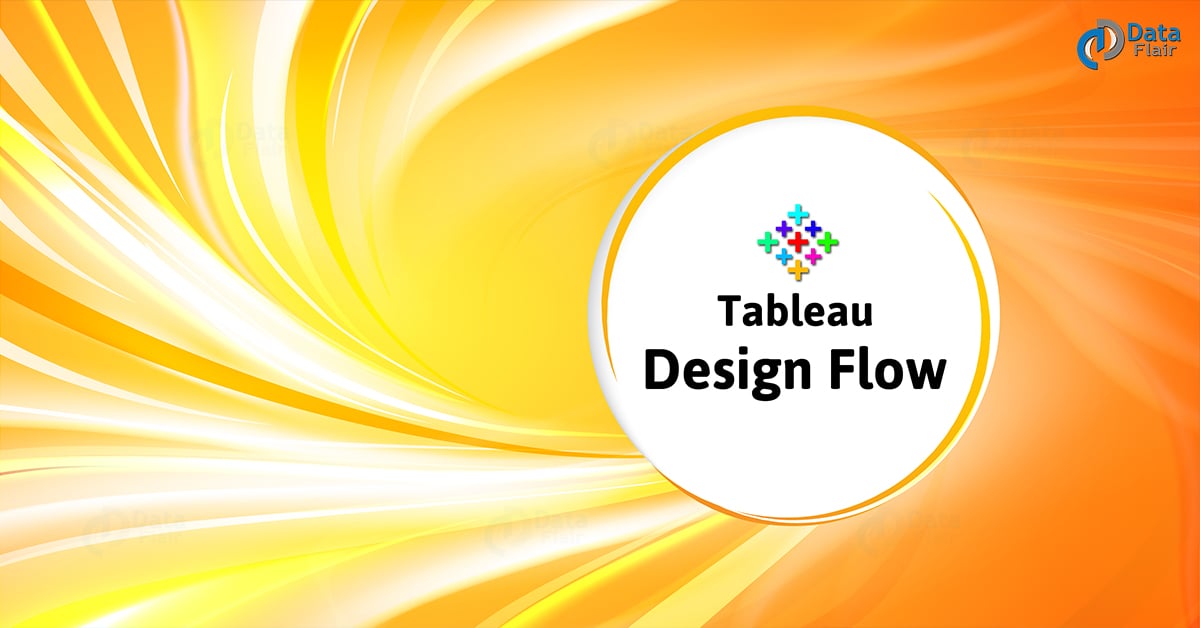Tableau Design Flow in Tableau Dashboard & Worksheet
FREE Online Courses: Transform Your Career – Enroll for Free!
1. Objective
In this Tableau tutorial, we are going learn about the Tableau Design Flow, the various steps involved in the design flow of Tableau, we will learn about them and thus move a step further in our journey of mastering Tableau.
So, let’s start Tableau Design Flow.
2. What is Tableau Design Flow?
Tableau helps in dissecting loads of information over differing eras, measurements, and measures, it needs an extremely careful intending to make a decent dashboard or story. Henceforth, it is vital to know the way to deal with a plan a decent dashboard. Like some other field of human undertaking, there are numerous prescribed procedures to take after to make great Tableau worksheets and dashboards.
Despite the fact that the ultimate result anticipated from a Tableau venture is in a perfect world a Tableau dashboard with the story, there are numerous moderate advances which should finish to achieve this objective. Following is a streaming chart of configuration steps that ought to be in a perfect world took after to make powerful dashboards of Tableau.
Do you know What is Tableau Show Me Menu?
3. Understanding Tableau Design Flow
a. Connect to Data Source
Scene interfaces with every single famous datum sources. It has inbuilt connectors which deal with building up the association, once the associated parameters are provided. Be it basic content documents, social sources, SQL sources or cloud information bases, Tableau associates with about each datum source.
b. Building Data Views
In the wake of interfacing with an information source, you get all the section and information accessible in the Tableau condition. You order them as measurements and measures and make any progressive system required. Utilizing these you fabricate sees, which are customarily known as Reports. The scene gives simple drag and drops highlight to assemble sees.
Follow this link to know about Tableau Reference Lines
c. Enhance the Data Views
The perspectives made above should improve further by the utilization of channels, totals, marking of tomahawks, designing of hues and outskirts, and so forth.
d. Create Worksheets
Create different worksheets to create different views on the same or different data.
e. Create and Organize the Dashboard
Tableau dashboards contain various worksheets which are connected. Subsequently, the activity in any of the worksheet can change the outcome in the dashboard appropriately.
f. Create a Story
A story is a sheet that contains a succession of tableau worksheets or dashboards that cooperate to pass on data. You can make stories to indicate how realities associate, giving setting, show how choices identify with results or essentially put forth a convincing defence.
So, this was all about Tableau Design Flow Tutorial. Hope you like our explanation.
4. Conclusion
This tableau tutorial helps us better understand Tableau Design Flow and also helps us learn how to make the presentations and stories better by learning the design flow of Tableau. Furthermore, if you have any query, feel free to ask in the comment box.
See also- How to download & Install Tableau
We work very hard to provide you quality material
Could you take 15 seconds and share your happy experience on Google



